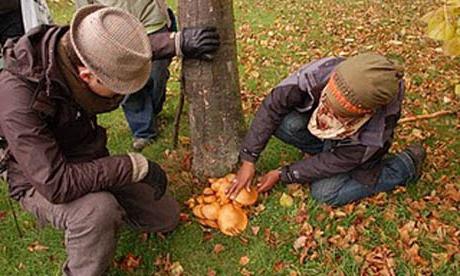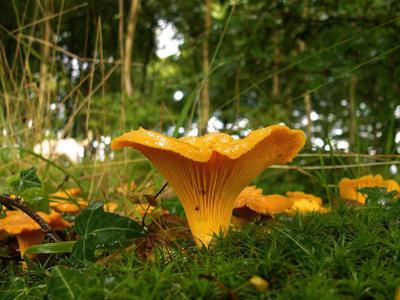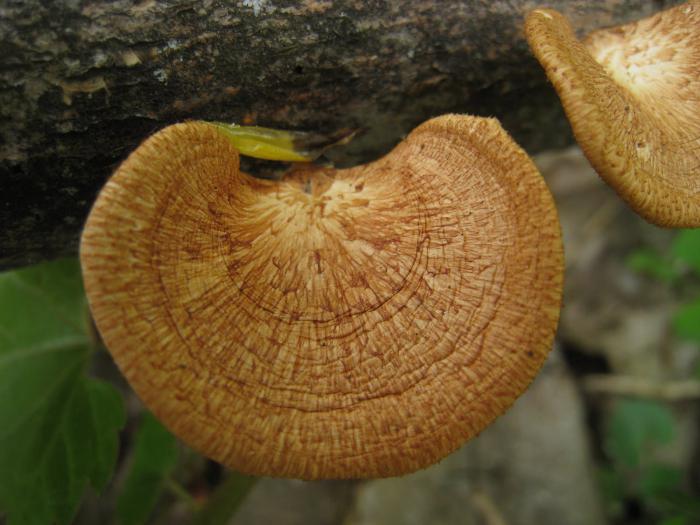Mushroom places in the Tula region. Description of mushrooms - photo
Perhaps, no one will give up the fascinatingwalks in the real forest in search of fragrant and delicious mushrooms, because it's just a few pleasures: enjoy the beauty of mixed and coniferous forests; breathe the aroma of fallen leaves or turkey needles; to experience delight and a certain excitement from their "booty" and, finally, bring home a full basket of good mushrooms. By the way, it is the Tula region that can be proud of the presence of the most popular and favorite mushrooms, therefore it is definitely worth visiting the local forests.
What kinds of mushrooms can be found in the Tula region
Among the edible fungi growing in Tula(mushrooms), boletus, capercaillie, freckles, mushrooms, gingerbreads, butter mushrooms, chanterelles, honey mushrooms, etc. Mushrooms in the Tula region have their preferences in terms of commonwealth with certain plants. That is why mushroom pickers know in what forests they can be found. The reserves of edible fungi in the region are so large that they are difficult to estimate. There are practically all kinds of mushrooms traditionally collected in the Russian Federation.

The main thing is to know where to look
The wooded area of the region, including forest plantations,is approximately 14% of the total territory. Coniferous forests (pine, larch, spruce) account for more than 13% of the area of the local green fund. And there are mushroom sites in the Tula region, mostly in the north and north-west. Among large and small-leaved species, oak, birch, linden, and aspen predominate. On the southern border with the forest-steppe there are oak and ash forests, in which one can also find an elm tree or maple.
So when and where are the best mushrooms collected, and which places are the most favorable for this? First, you need to go after the recent rain. Secondly, in the direction of the forest and away from people.
The best mushroom regions of the Tula region
The wooded part of Odoevsky district, once impenetrable, is famous for its abundant harvest of mushrooms, therefore, being in this locality, it is worth to devote an hour or two to "quiet hunting".

The most eco-friendly local mushrooms aregrowing in Suvorov, Belevsky and Arsenyevsky districts. Chanterelles, podberezoviki, white, mushrooms will replenish the collected collection of mushrooms. But you can not offend the nearest Lenin district to Tula, as well as Yasnogorskiy, Chernsky, Efremovsky, where you can easily collect the best mushrooms in the area, and not just one basket. Here you will find butter mushrooms, swine, boletus and many other species.

In those places where mushrooms grow abundantly,be a lot of heat and moisture. The unique mixed forests of Dubensky, Odoyevsky and Alexinsky pine forests will please the mushroom pickers. In addition to mushrooms, poderezozovikov, red and chanterelles, you can collect a good harvest of hazelnuts, dog-rose, strawberries and even raspberries. In general, the Tula region is truly rich in summer and autumn natural gifts. And the mushroom places in the Tula region are literally everywhere.
Seasons of the appearance of mushrooms
Almost all lovers know that mushrooms inTula region have a seasonal character of growth, that is, each species has its own specific time. Mushrooms in the Tula mixed and coniferous forests appear as waves, depending on the weather conditions. It is thanks to this for the summer-autumn season you can get on 3-4 alternating waves.
And although in this rich naturalCollect mushrooms already in June, yet the main mushroom month is September. Even in the season of warm autumn rains, mushroom places in the Tula region will be presented to each collector with two buckets of excellent specimens.
Mushrooms in June
After the earth has warmed up a littlesun rays, the first mushrooms - morels begin to appear. And although they are considered edible only after a special treatment, there are lovers of eating dishes from morels. But according to the people's note, it is in those places where this mushroom was collected that the following boarers will follow.
On wet hemp and logs of deciduous treesyou can meet a cheerful company of sweet or colorful russules. All June mushrooms are called kolosovikami, because they appear during the killing of rye.
July fungi of the Tula forests
The second summer month is rich in russula and mushrooms,which grow in any forests - both deciduous and coniferous. Not far from birch woodlands you can collect young and strong valuies, and in pine groves after rains - an oil.

Under the small-leaved trees, through whichpenetrates enough sunlight and sunshine, oilseeds and swine grow, and toward the end of the month - even noble buntings and boletus. In broad-leaved forests mushroom pickers will live on delicious mushrooms and podgruzhkami.
In birch and mixed forests it is possible to meetvery cute and delicious mushroom wave, the admirer of which are many. With the right processing, a white or pink wavelet has a very pleasant taste, and it's a pleasure to look for it in the woods, as the fungus is large enough and grows in families.
But true lovers stay in expectation of white mushrooms.
August fungi of Tula forests and oak forests
August is already the beginning of this season. So, seasonal mushrooms in the Tula region of 2014 were very diverse, and the harvest - rich in red, chanterelles, freckles, mosses and podborozoviki.

Beauty yellow fox is not only delicious, but alsorich in carotene, which gives it value as a dietary product. She adores the places, sprinkled with needles and wrapped in moss. It grows in small groups, but incredibly productive.
Actively grow from under the earth beloved by all whitemushrooms and boletus. White mushroom (boletus) is considered to be royal. He has incredible taste, aroma and low caloric content. Depending on the conditions of growth and age, it can be with a light or dark brown bonnet. It prefers both a pine forest and mixed forests. Under good conditions, the height of its legs can reach 30 centimeters, and the diameter of the cap is 50 centimeters!

The description of mushrooms can last indefinitelylong. In general, this is the main month for picking mushrooms in the Tula region, when people try to make their favorite kinds of stocks for the winter. They are dried, salted and marinated, so that for months to enjoy the preparation of fragrant, useful and tasty dishes.
Autumn fungi of the Tula region
In early autumn, mushroom pickers like to collect mushrooms andpodberezoviki, boletus, oil and mushrooms. During this period, collectors are looking for mushroom sites in the Tula region where there are slopes and hills, most of the day illuminated by the sun.
The main autumn mushrooms are valui andchanterelles, although almost to freeze you can meet mushrooms and a family of snowballs. Sometimes there are mushrooms, cyanosis and other species, but they are getting smaller.
In the manuals you can find a detailed descriptionmushrooms with illustrations, and then beginners are definitely not mistaken in their search. Although it is best if starting mushroom pickers go camping with connoisseurs. In the Tula region there are many hiking routes, which are easy to reach by train or car. A unique local forests are not only fertile, but clean, so you should definitely go there and enjoy the outdoor activities, fresh air and come back with a basket full of top-quality mushrooms.
</ p>




